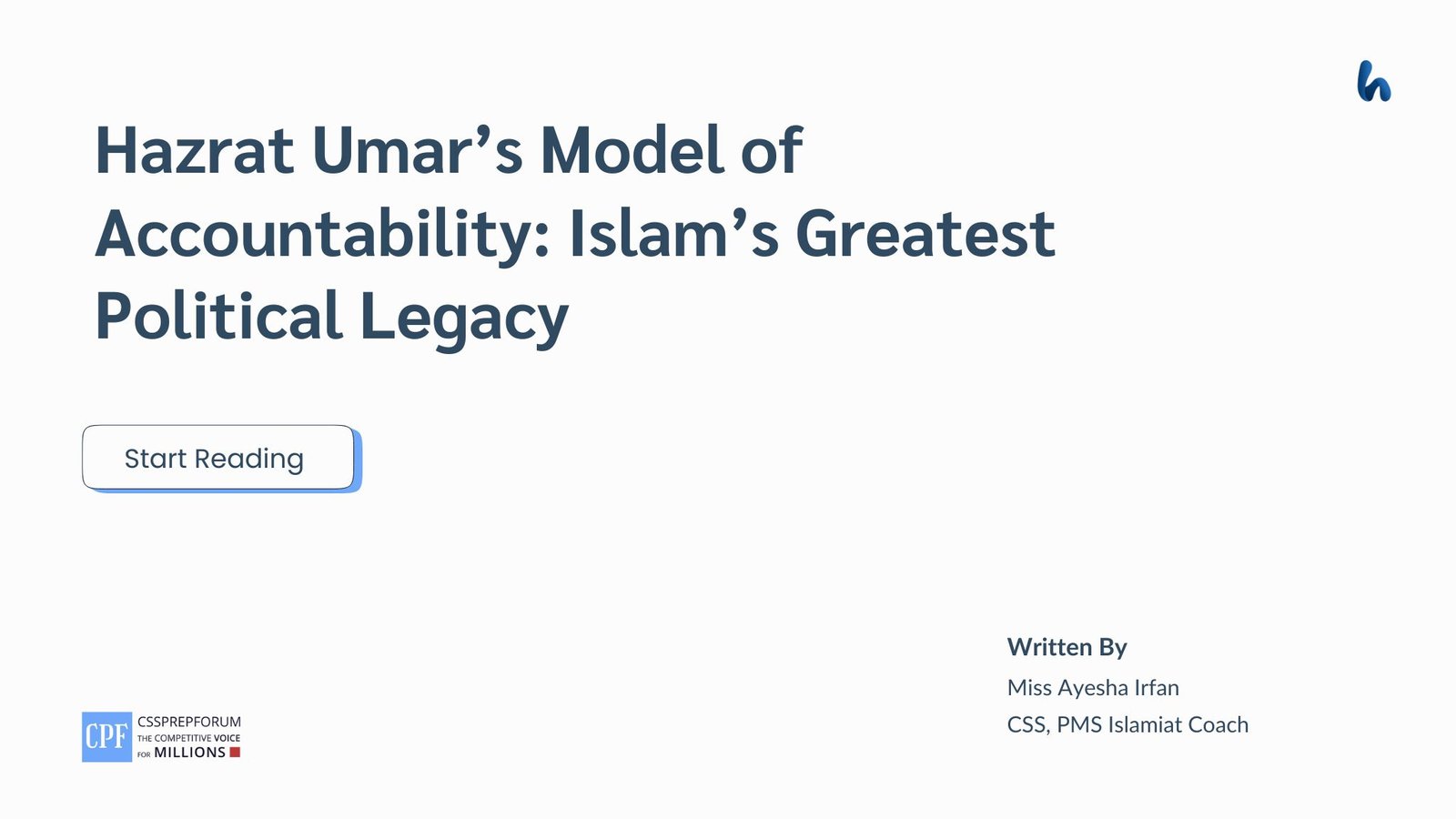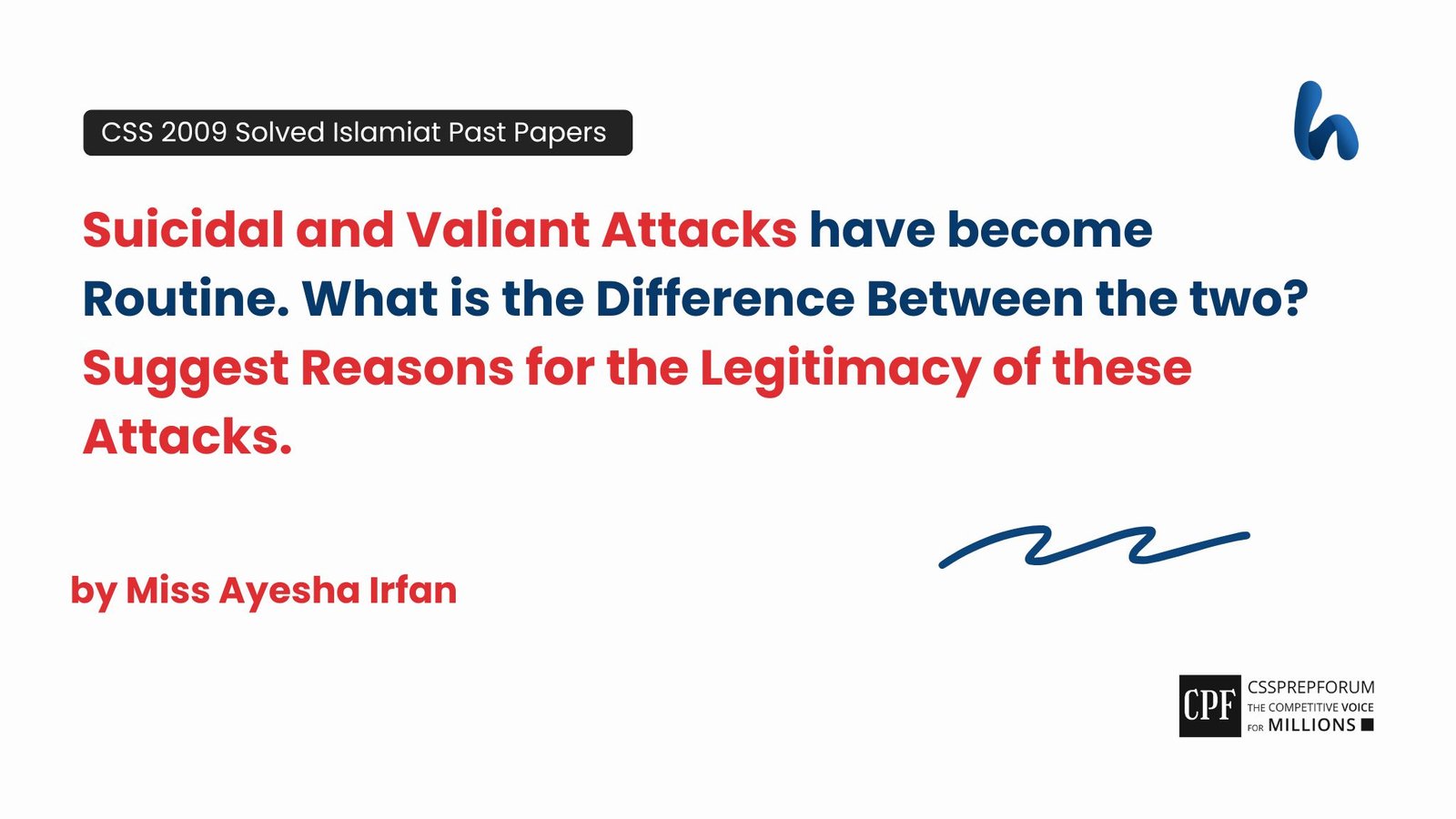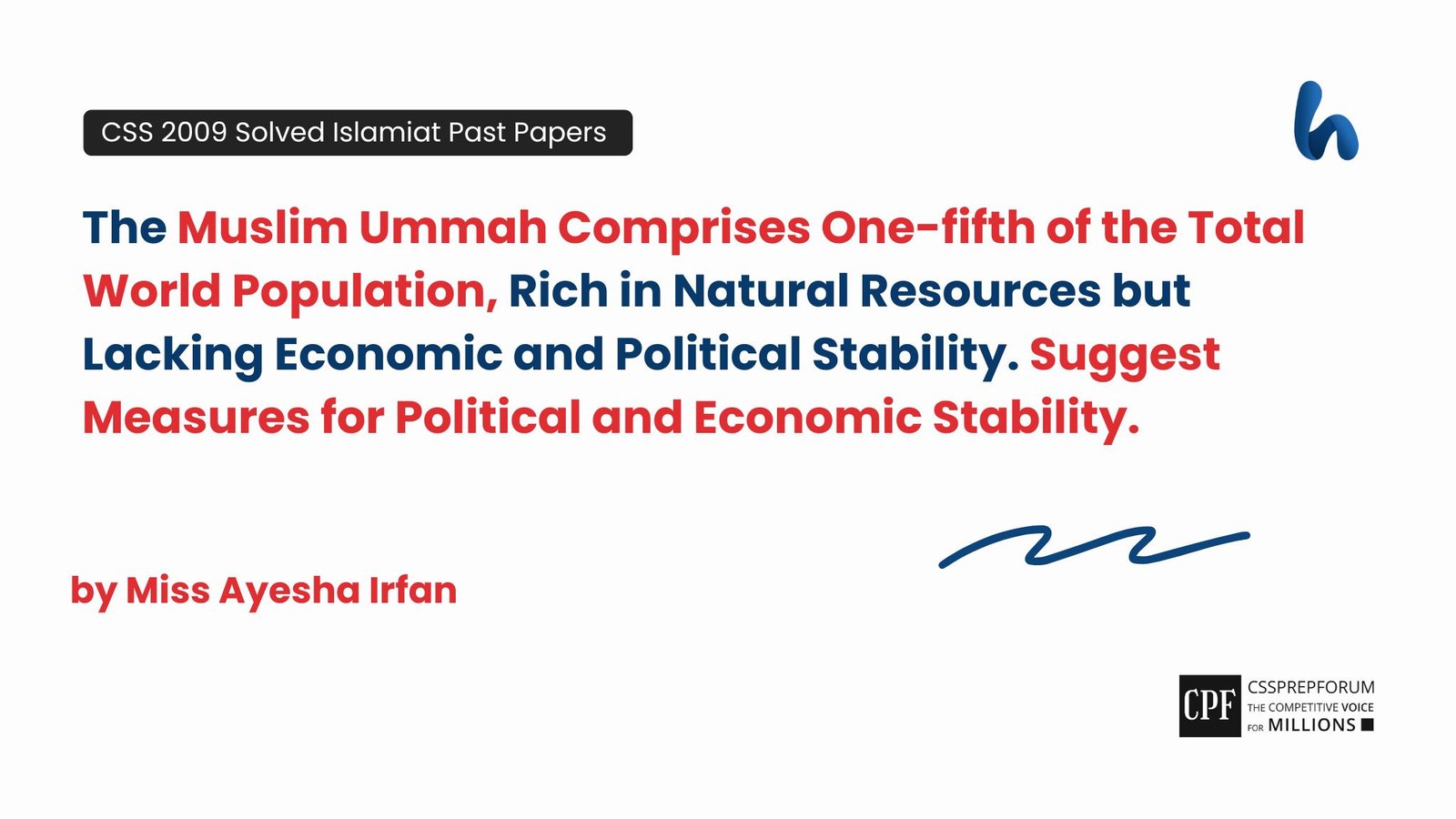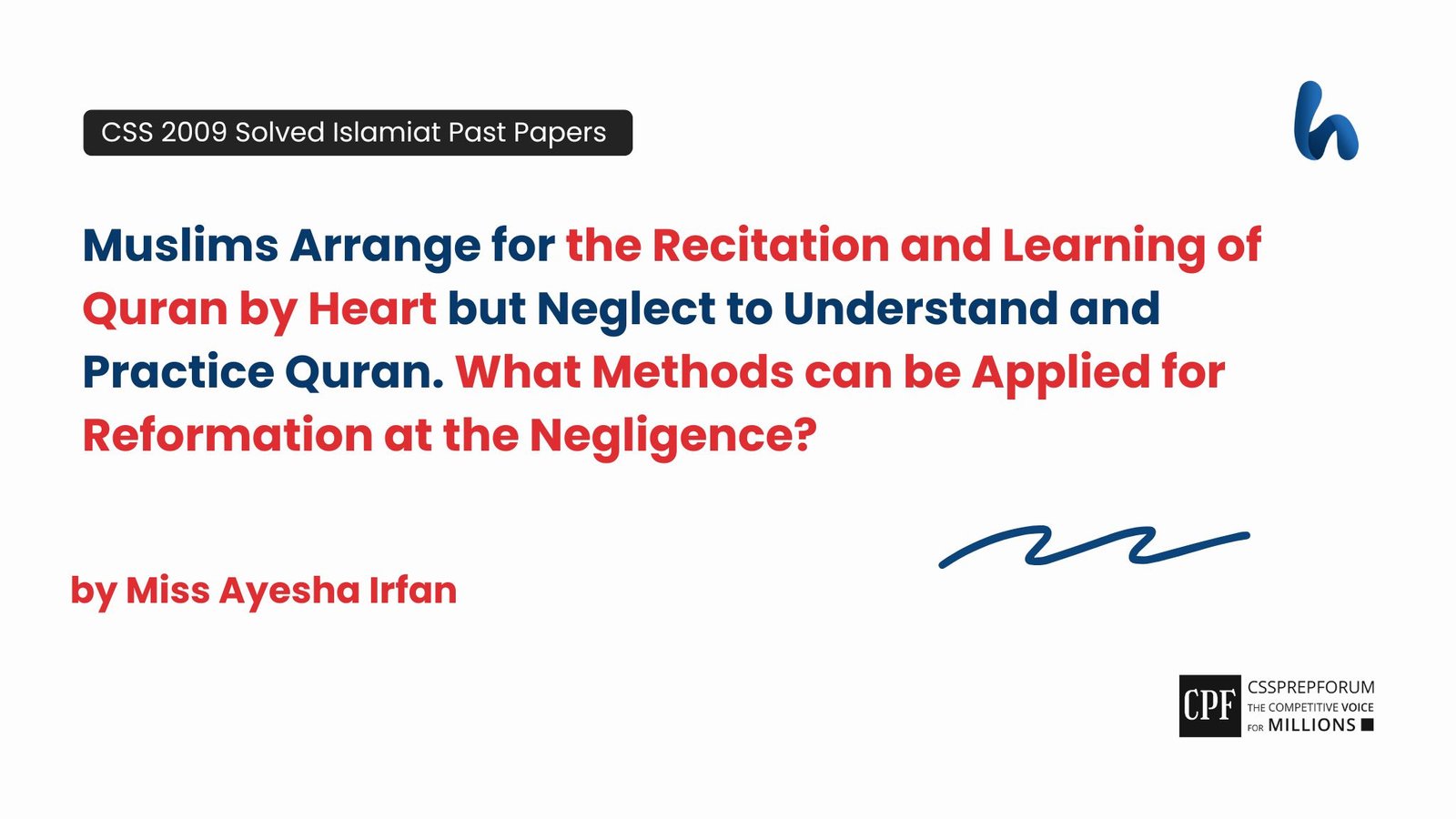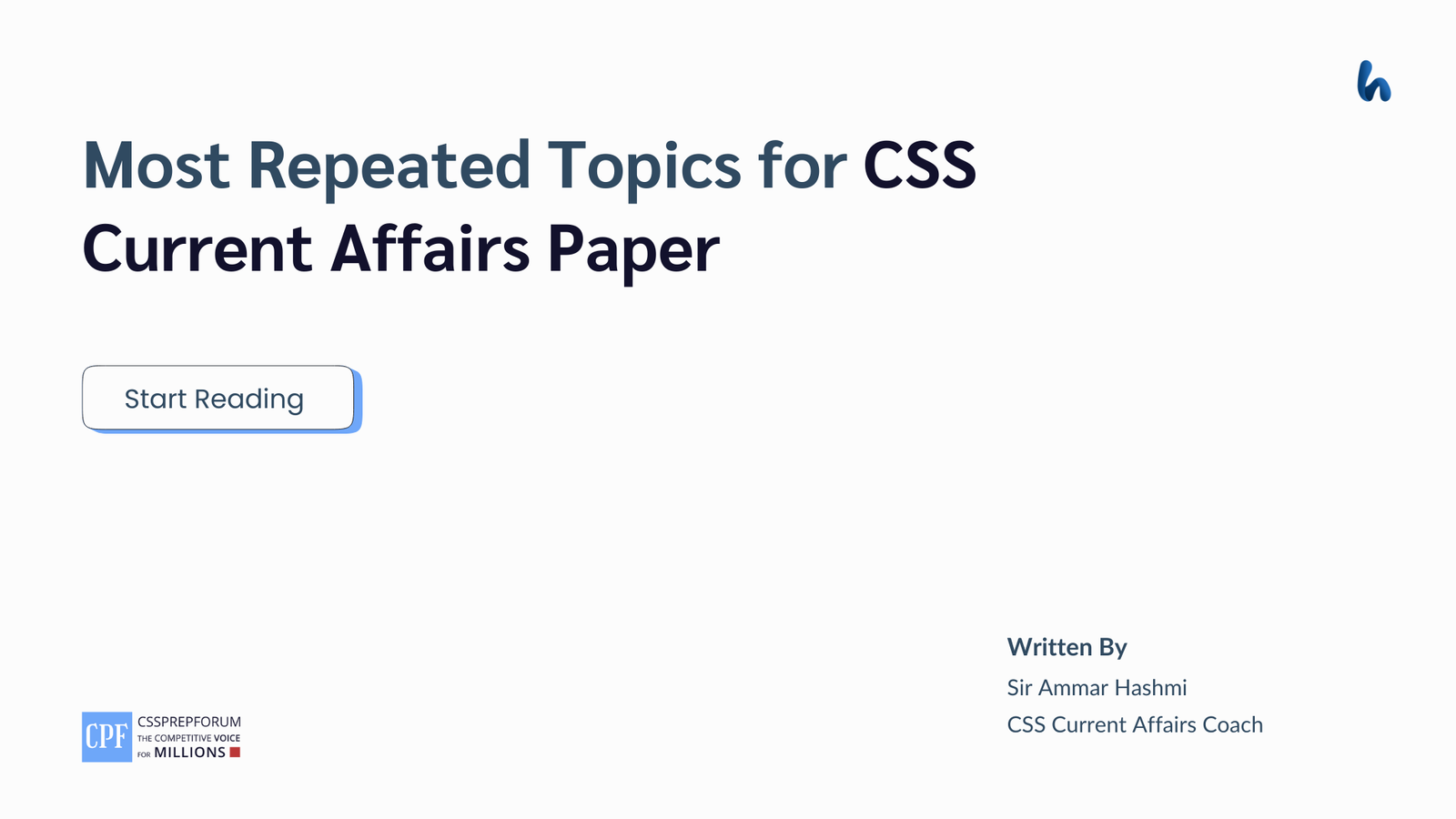CSS 2010 Solved Pakistan Affairs Past Papers | Contrast between Aligarh and Deoband Movement
The following question of CSS Pakistan Affairs 2010 is solved by Miss Iqra Ali, the best Pakistan Affairs Coach, on the guided pattern of Sir Syed Kazim Ali, which he taught to his students, scoring the highest marks in compulsory subjects for years. This solved past paper question is uploaded to help aspirants understand how to crack a topic or question, how to write relevantly, what coherence is, and how to include and connect ideas, opinions, and suggestions to score the maximum.

Question Breakdown
In this question, the examiner has asked you to discuss the contrasts between the Aligarh and Deoband Movements and the antagonistic approach of their leaders toward each other. So, start with the introduction, which includes all the leading concepts you will write in your answer. Then, split the contrasting elements between the movements and support your answer with facts or arguments. End your answer with a conclusion.
Outline
1- Introduction
2- What were the Leading Contrasts between the Aligarh Movement and the Deoband Movement
- Clash of Visions, the Contrasting Foundations and Ideologies
- Cooperation vs. Resistance, Contrasting Approaches to British Rule
- Constructionism vs. Orientalism, Contrasting Educational Goals
- Reform vs. Revolution: Contrasting Political Approaches in Movements
3- Why were the Leaders of the Aligarh and Deoband Movement at Draggers Drawn with Each Other?
4- Conclusion
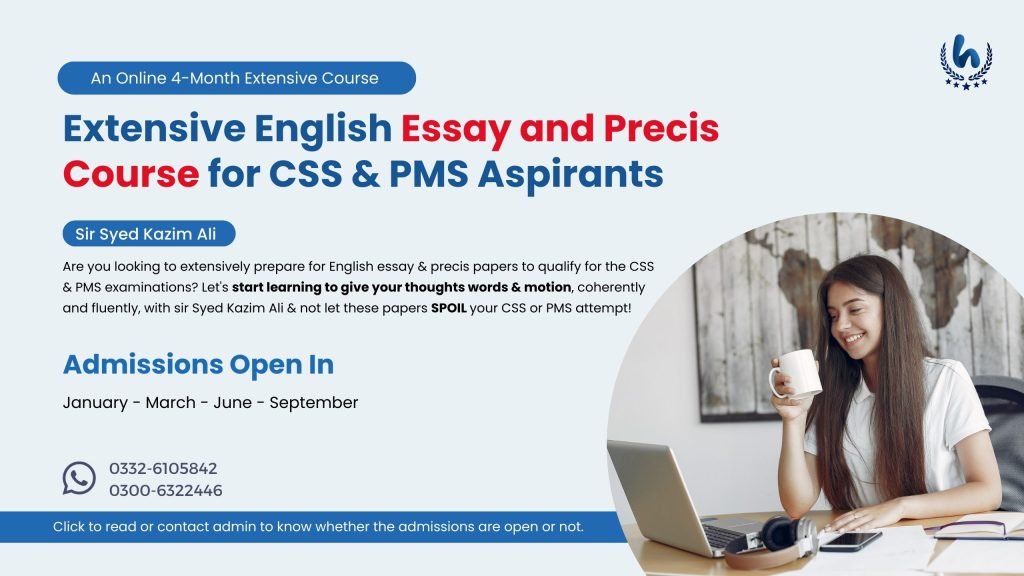
Answer to the Question
Introduction
Educational Reform Movements in the Indian Subcontinent started after the establishment of the direct rule of the British Crown in the 19th century and were primarily an attempt to reform the Muslim community on socio-economic, religious, and political fronts. However, their long-term impacts signified the multi-pronged agendas of their leaders. The Aligarh and Deoband Movements held colossal significance among these movements. Both movements aimed at uplifting the Muslims of the Indian subcontinent; however, they had striking contrasts in their ideologies, approaches, responses, and agendas. The following points demonstrate the leading contrasts between Aligarh and Deoband’s Movements. First, the Aligarh Movement was primarily an educational venture, but the Deoband Movement had academic and political goals. Second, the Aligarh Movement was pro-British, but the Deoband Movement was explicitly anti-British. The former facilitated the passage of the Western education system, but the latter facilitated only oriental Islamic studies. Last, their leaders had an antagonistic approach towards each other because Sir Syed Ahmad Khan became a supporter of the two-nation theory; however, Deobandi remained staunch nationalist, antagonizing the separate state cause. To conclude, both movements had striking contrasts, but their pupils played a vital role in the Pakistan Movement.
What were the Leading Contrasts between the Aligarh Movement and the Deoband Movement?
The following points demonstrate the leading contrasts between Aligarh and Deoband Movements, showcasing the distinct nature, ideology, agendas, and approaches.
Clash of Visions, the Contrasting Foundations and Ideologies
- ✓ Aligarh Movement
As a result of the War of Independence of 1857, the Indian authority was shifted from the Muslims to the British hands. The British government considered Muslims responsible and labeled the war as a rebellious move of Muslims to get their power back. As a result, the British government started to prioritize the inclusion of Hindus in the socio-economic and administrative functions as a countervailing force against the influence of Muslims. With time, the British government initiated the enforcement of a democratic form of government in the Indian subcontinent, which meant majority rule in unified India. The consensus of 1871 labeled Muslims as a minority, which means the subordination of Muslims in the Hindu-dominated democratic India. This course of events gave birth to an intellectual, Sir Syed Ahmad Khan, who stood by the side of the British in the War of Independence in 1857 and saved the lives of many British personnel. He realized the faltering situation of the Muslims and led a movement titled the Aligarh movement. The movement was aimed at developing the Muslims of the Indian subcontinent on academic lines based on modern Western education and science and technology so they could secure more government jobs to represent their interest before the British government.
- ✓ Deoband Movement
The establishment of the rule of the British crown and state institutions to govern the fully occupied colony saw a new change that the government wanted to bring, changing the educational system under constructionism that included oriental studies. The constructionism incorporated a Western-style education system and the inclusion of a foreign language, English, in the academic system of the Indian subcontinent. However, the former power holders and their educational systems function under the Madrassa system that prioritizes religious studies. The enforcement of the new academic system responded like a threat to Islam, and the Muslim community took a stand to preserve their identity. Then, the abrupt entrance of Christian missionaries was also a daunting challenge for Muslims. So, some followers of Maulana Ishaq, under the supervision of Moulana Qasim Nanitvi, established Darul Ullom in the old mosque of Chatta at Deoband on May 30, 1866. The ideology of Deobandis was based on establishing the legacy of Shah Walli Ullah by making Deoband the center of the movement.
Cooperation vs. Resistance, Contrasting Approaches to British Rule
- ✓ Aligarh Movement
The Aligarh movement had a pro-government approach, as demonstrated in one of its objectives, which stated that Muslims should be loyal subjects of the British government. As a result, the government financially supported the establishment of various institutions. According to Ahmad Syed and Khalid Mansor in their book Trek to Pakistan, the UP (former Utter Pradesh) government sanctioned a monthly grant of Rs 350/ for the school. Apart from this, Sir Syed Ahmad Khan tried to promote a positive image of Muslims before the British government through his instrumental works, such as Asbab-e-Baghawat-e-Hind, the loyal Muhammadans of India, where he tried to show the reasons for the mutiny-cum-independence movement.
- ✓ Deoband Movement
The approach of the Deoband Movement toward the government was based on antagonism, as one of the objectives of the Movement included the avoidance of the influence of the British government. Ahmad Syeed wrote in the book TREK TO PAKISTAN that Moulana Mohammad Qasim Naotvi (1830-1880) laid down eight golden principles, which were to form the core of the constitution of the Darul Uloom. He was fully conscious of the need to guard it against the infiltration of government influence through grants-in-aid or donations. The school rejected all possibilities of the influence of the British government. So, funding remained highly based on the assistance of locals who gave money without any hope of fame or materialistic gain.
Constructionism vs. Orientalism, Contrasting Educational Goals
- ✓ Aligarh Movement
The aims and objectives of the Aligarh Movement were to uplift the Muslims of the Indian subcontinent academically and intellectually to make them capable of securing more government jobs. According to Ahmad Saeed and Kh. Mansoor Sarwar, in their book Trek to Pakistan, in the opinion of Syed Ahmad, the cure for all kinds of sufferings and difficulties facing the Muslims lay only in Western education; therefore, he urged the nation to adopt education and only education as its motto. However, the Aligarh institution’s educational developments contributed to the awakening of the nationalist spirit of the Muslims and motivated them to fight for their rights. For example, the All India Muslim League, which was the first political party established during the British Raj, was founded in the annual session of the All India Muhammadan Educational Conference in 1906.
- ✓ Deoband Movement
The aims and objectives of Darul Uloom were to provide comprehensive information about Islam to the Muslim society of the Indian subcontinent. It also included arrangements for the teaching of the Quran, Tafseer, Hadees, and related subjects to promote understanding of the directive principles of Islam. Also, its aim included the propagation and preaching of Islam and the establishment of institutions that promote Arabic and are affiliated with Darul Uloom.
Reform vs. Revolution, Contrasting Political Approaches
- ✓ Aligarh Movement
The political aspect of the Aligarh Movement encapsulated its anti-congress approach. Despite that Congress was the sole representative party of Hindus and Muslims before the British government, he suggested Muslims not to join it. The reason was not only based on his agenda of keeping Muslims away from indulging in politics and developing them intellectually to revive their lost spirit but also to make them capable of abating the imminent threat of majority rule. The Urdu-Hindi Controversy in 1867 and the British-led democratic structure in India were among the leading factors that transformed his thoughts from supporting Hindu-Muslim unity to acknowledging the two-nation theory.
- ✓ Deoband Movement
Conversely, the political aspect of the Deoband Movement encapsulated a pro-congress approach. They wanted the political representation of the Muslims because it was indispensable for the maintenance of their Jihadi (defense) credentials. Furthermore, they organized politically to counter British rule. Being part of composite nationalism, they antagonized the formation of Pakistan. Deoband clerical wing, founded in 1919 under the title of Jumiat Ulema-e-Hind, played an influential role in the Khilafat Movement. Also, the organization played a significant role in the Indian Independence movement.
Why were the Leaders of the Aligarh and Deoband Movement at Draggers Drawn with each other?
The following figure explains the difference of opinions and the reason for antagonism between the leaders of the Aligarh Movement and the Deoband Movement.
| Events | Reasons Aligarh Movement | Reasons Deoband Movement |
| Formation of the Indian National Congress (INC) | Anti-INC agenda, Sir Syed Ahmad Khan opposed | Pro-INC agenda Maulana Mahmud Hasan and others supported the Congress |
| Pro-British vs. Anti-British Stances | Sir Syed encouraged loyalty to the British Crown | Anti-British, Maulana Ubaidullah Sindhi and Maulana Mahmud Hasan actively participated in resistance movements, such as the Silk Letter Conspiracy. |
| Khilafat Movement | Sir Syed’s distanced himself from the Khilafat Movement | Maulana Abul Kalam Azad and Maulana Mahmud Hasan were prominent supporters of the Khilafat Movement |
| Educational Policies | Integration of Western sciences, English language education, and Islamic principles (Pragmatic and intellect based) | Rejected Western sciences and languages as unnecessary, Traditional Islamic education and the Madrassa system |
| Religious Interpretation and Modernization | Rationalist approach to Islamic theology | Orthodox Interpretations |
Conclusion
To conclude, the Aligarh and Deoband Movements were started in response to the faltering state of Muslim society. However, their way of preserving the status of Muslims was different. Their contributions played a significant role in emancipating the Muslims socially and economically. Apart from this, the Aligarh Movement also had a political aspect aligned with it, which was demonstrated later when the pupils of the institutions played a significant role in the Pakistan Movement. Besides, it is a fact that the Deoband Movement promoted religious education and discouraged the Western education system, but the Aligarh Movement supported both with a rationalist approach.
CSS 2010 Solved Pakistan Affairs
CSS Solved Past Papers’ Essays
Looking for the last ten years of CSS and PMS Solved Essays and want to know how Sir Kazim’s students write and score the highest marks in the essays’ papers? Then, click on the CSS Solved Essays to start reading them.
CSS Solved Essays
CSS Solved General Science & Ability Past Papers
Want to read the last ten years’ General Science & Ability Solved Past Papers to learn how to attempt them and to score high? Let’s click on the link below to read them all freely. All past papers have been solved by Pakistan’s top CSS GSA coach having the highest score of their students.
General Science & Ability Solved Past Papers


